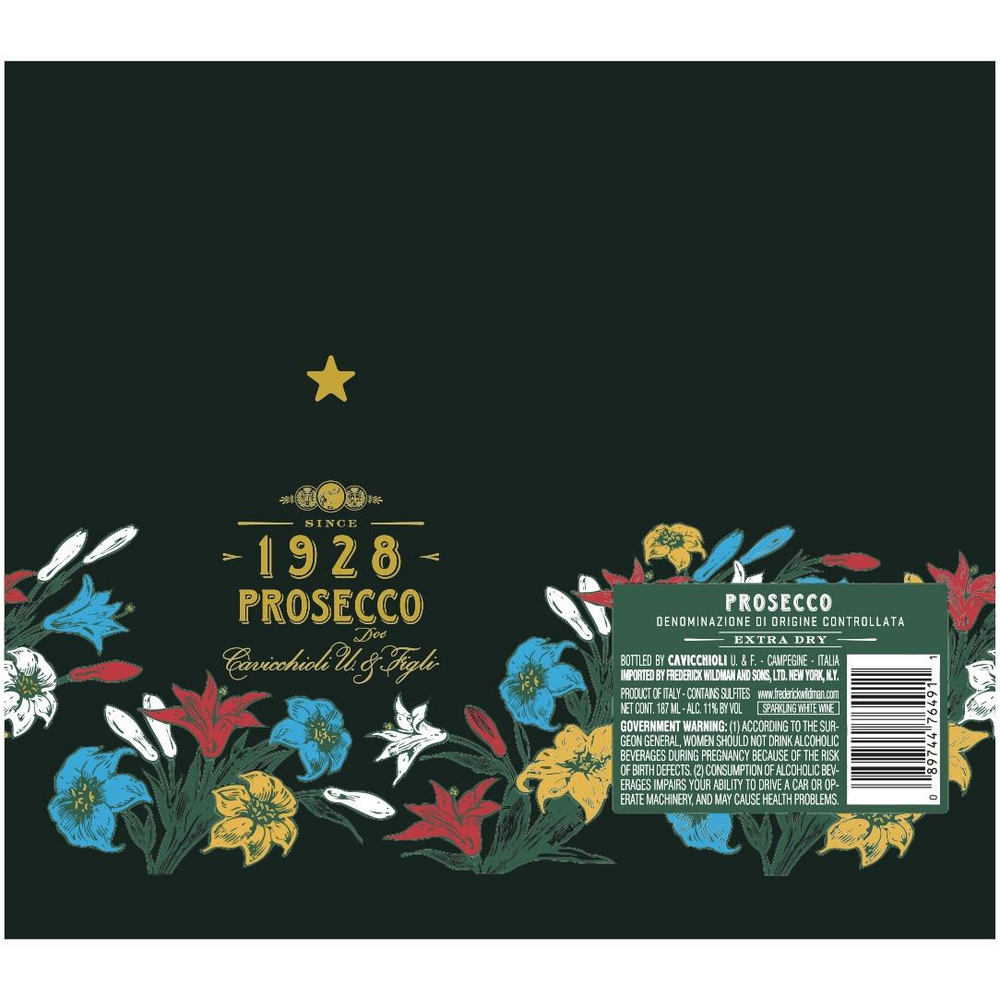Cavicchioli 1928 Prosecco 750ml Cavicchioli
$ 20,99 $ 12,59
Description
Cavicchioli 1928 Prosecco DOC Spumante Extra Dry features, when poured and tasted, white foam; lively, fine and persistent perlage; pale straw yellow color; an intense aroma of candied fruits and sweet flowers; and a fresh and delicate taste with an aromatic finish.
Features
Sustainable
Producer Description
The Cavicchioli family has been cultivating vines in the San Prospero province of Modena (Sorbara DOC) for over a century, but it was not until 1928 that Umberto Cavicchioli began bottling the wine under his family name. Umberto’s two grandsons, brothers Sandro and Claudio, are still part of the business today: Claudio looks after the commercial side of the family business and Sandro is the Winemaker. The Cavicchioli family is among the largest landowners in the Modena DOC with 95ha of vineyards of which 70ha are of the prized Sorbara variety. Here, the climate is always humid with cold winters and hot summers and vineyards are planted in the pergola system to keep the vines dry.Their family’s focus on vineyard ownership, low yields and DOC production has been instrumental in establishing Cavicchioli as one of the few leaders in high-quality Lambrusco and Sparkling wines, available in Italy’s best dining establishments including Modena’s only 3-Michelin Star restaurant.Lambrusco and its wine have a long and noble history. Legend says that a Vitis Lambrusca, or “Wild Vine” as named by Ancient Romans, crept out of the forests of the Apennine Mountains and settled in Emilia, around Modena. The wine form this vine was enjoyed by the Etruscans and lauded by the poets of ancient Rome such as Virgil, Cato and Pliny the Elder who recommended it for its supposed therapeutic effects. Its fossilized remains have been found in soils of the Eocene period (30 million years ago).Over centuries, it developed different characteristics according to local conditions so that there are noticeable differences in the 30+ sub-varieties found today. There are now five Lambrusco D.O.C.s, based on sub-variety and location: Lambrusco di Sorbara (min 60% Sorbara), Lambrusco Grasparossa di Castelvetro (min. 85% Grasparossa), Lambrusco Salamino di Santa Croce (min. 90% Salamino), Lambrusco di Modena, Lambrusco Reggiano, the latter two can be blends of many sub-varieties.Modena remains the center for production of quality Lambrusco. To the North of Modena are the fertile plains of the Po River Delta, resulting in the richest agricultural center in Italy. Here, the Sorbara and Salamino varieties grow on soils of alluvial origin rich in sand and clay, resulting in delicate wines, which in the case of Sorbara, are extremely fragrant and light in color. To the South of Modena, and around the town of Castelvetro, are the foothills of the Apennines where sloped vineyards lay on poorer, rocky soils ideal for the Grasparossa or a “red-stemmed” variety. Wines from this variety are denser, darker, more structured and made in the dry or abboccato (off-dry) style.Whether delicate or robust, dry or abboccato, these Lambruschi have a pronounced acidity which, together with its bubbles, are perfect foils to Emilia’s hearty cuisine based on dairy, cured pork and egg pasta.
Quick Shipping and Professional Packaging
We offer a broad range of shipping options thanks to our long-running partnerships with UPS, FedEx and DHL. Our warehouse staff are educated to pack your items exactly as per the specifications that we supply. Your items will undergo a thorough inspection and be securely secured prior to being shipped. We ship to thousands of customers each day from multiple countries. This is a sign of our determination to become the largest online retailer worldwide. Both Europe as well as the USA have distribution and warehouse centers.
Please note that orders with more than one item will be given a processing time according to the specific item.
Prior to shipping, our team will perform an exhaustive inspection of the items you purchased. Today, the majority orders will be shipped within 48 hours. The delivery time is estimated to be between three and seven days.
Returns
The stock is constantly changing and cannot be fully controlled by us due to the involvement of several different parties, such as the factory and our warehouse. The actual stock can change at any moment. Please be aware it's possible your order may become unfulfilled when you have placed the order.
Our policy is valid for a period of 30 days. If it's been more 30 days since you purchased your item and we're unable to offer you a full refund or exchange.
You are able to return an item when it's unopened and is in the same condition when you first received it. It must also be in the original packaging.


































